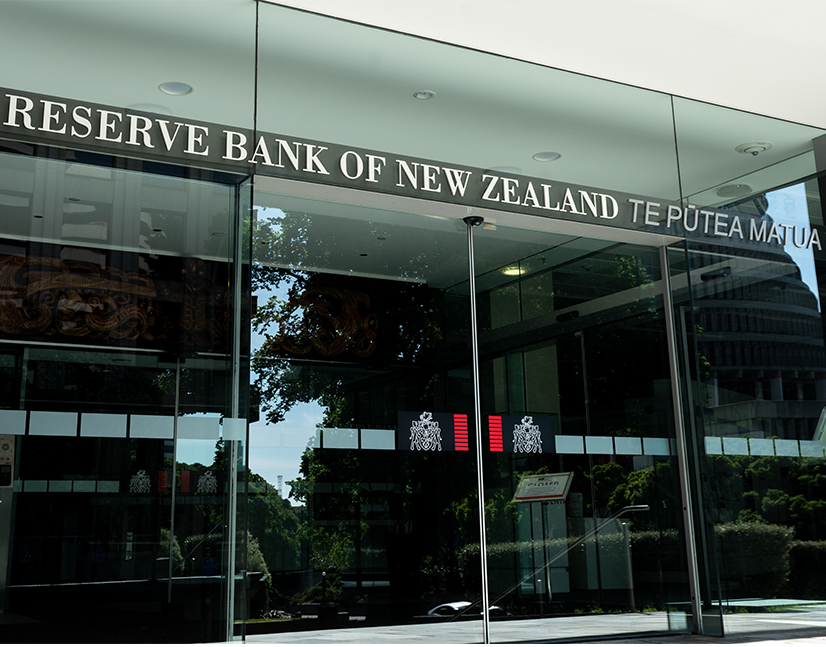
RBNZ joins the QE choir
The Reserve Bank of New Zealand (RBNZ) added its voice to the global chorus of central banks implementing unconventional monetary policy measures with the launch of a large-scale asset purchase (LSAP) programme on 23 March.This is designed to reverse tighter funding conditions caused by the COVID-19 crisis.
Chris Rich Staff Writer KANGANEWS
Matt Zaunmayr Deputy Editor KANGANEWS
The RBNZ will purchase up to NZ$30 billion (US$18.3 billion) of government bonds across the curve in the secondary market over 12 months. “The programme aims to provide further support to the economy, build confidence and keep interest rates on government bonds low,” the RBNZ said.
The move follows a widening in New Zealand government bond (NZGB) yields following the announcement of the New Zealand government’s fiscal stimulus measures on 17 March, which greatly increased its funding requirement.
The RBNZ announced its first set of measures to combat this widening on 20 March, introducing a funding facility for banks out to a 12-month duration and the establishment of a temporary US dollar swap line with the US Federal Reserve. Analysts in New Zealand remained adamant, however, that QE would be the only avenue to ease funding concerns.
Indeed, the reserve bank eventually introduced the LSAP programme for government bonds and a term-lending facility (TLF) to provide funding of up to three-year tenor to banks.
Early moves
The 20 March measures came four days after the RBNZ cut the official cash rate (OCR) by 75 basis points to 25 basis points and delayed the implementation of new capital standards for banks.
The measures, including the provision of term funding through a term auction facility (TAF), were implemented immediately. This gave banks access to funding for up to 12 months in exchange for NZGBs, residential mortgage-backed securities (RMBS) or other bonds in collateral.
In a separate statement, the RBNZ said the TAF would operate in a manner similar to its open market operation (OMO). Specifically, the central bank would offer it daily in lieu of the day’s OMO, with terms of about three, six and 12 months on offer.
In addition, the RBNZ revealed it would provide liquidity in the foreign-exchange swap market to ensure this form of funding could be accessed at rates near the OCR. Along with many other central banks, the RBNZ re-established a temporary US dollar swap line with the Fed, in an amount up to US$30 billion.
The RBNZ also stated it had already commenced “providing liquidity to the NZGB market”, though it did not disclose the extent of its involvement.
Even with these measures in place, the interest rate on NZGBs significantly increased as liquidity dried up. In a research note, Dominick Stephens, Auckland-based chief economist at Westpac New Zealand, revealed that New Zealand soveign yield reached 2.6 per cent for 17 years on 19 March, a doubling of the interest rate in just a week.
QE demand grows
Stephens feared the set of RBNZ measures in the 20 March announcement would do little to reduce longterm interest rates. He noted that long-term NZGB yields fell by just 10 basis points in the wake of the announcement.
“We suspect the RBNZ is going to have to begin a QE programme very soon, similar to the Reserve Bank of Australia’s move,” Stephens wrote. “This would involve buying large quantities of government bonds.”
Other analysts had doubts as well. ANZ and BNZ published research notes on 19 March detailing a blowout in NZGB spreads (see chart 1) and what BNZ’s analysts called an “extremely strained” credit market. Volatility in New Zealand remained acute, even after the government announced a massive fiscal stimulus package.
The NZ$12.1 billion stimulus is designed to ease the financial burden on households and businesses set to take an economic hit. But analysts said investors appeared to be baulking at the inevitable huge influx of government bonds.
New Zealand Debt Management (NZDM) will need to issue NZ$5.1 billion of bonds in the second quarter of 2020 based on the stimulus volume. BNZ’s research note says: “Such an increase in supply would be testing for the market under normal conditions, but these are not normal times.”
Compounding the sheer volume of NZGB issuance to come in the months and years ahead is the fact that New Zealand’s government-sector borrowers are likely to be “off the radar of, or well down the priority list for, global investors at present”, BNZ analysts wrote.
“In recent days, governments across the world have been 2.4 outlining major fiscal stimulus plans,” the BNZ note continued. “This raises the spectre of much higher government bond supply across multiple countries simultaneously. Against this backdrop, it is likely to be more challenging for New Zealand to access global capital.”
On top of all this, offshore investor holdings of government bonds had already been on a downward trend at the beginning of 2020 (see chart 2).


RBNZ responds
The RBNZ bowed to the pressure within days. Its 23 March statement accompanying the announcement of the purchasing programme notes that higher yields, particularly on long-end NZGBs, counteract the 75-basis-point reduction in the OCR implemented on 16 March. The central bank had stated at the time of that decision that its next measure 100 would probably be QE if further monetary policy stimulus was necessary.
Also on 23 March, NZDM stated that the RBNZ’s decision did not alter its current funding task – which it updated on 17 March. NZDM says it will work closely with the central bank to ensure the efficient functioning of the NZGB market.
New Zealand’s central bank may increase the size of its QE programme and has also left the door open for the use of other instruments, likely in line with the guiding principles for unconventional monetary policy it published on 11 March. 20
The RBNZ also entered the market for New Zealand Local Government Funding Agency bonds in early April. Initially it did so with little fanfare and outside the purview of its main asset-purchasing programme purely to support market functionality. This rapidly escalated to a full programme of bond buying.
Analysts in New Zealand expect the large-scale asset purchases to deliver relief for the NZGB market. Nick Smyth, Wellington-based interest rate strategist at BNZ, argues that the programme will provide investors with confidence that the RBNZ is prepared to support the market amid much higher NZGB issuance volume. This, he adds, should help offset upward pressure on yields.
An ANZ research note was also optimistic about the impact of QE on government bond yields. “RBNZ purchasing should exceed NZDM primary issuance to ensure that yields move sharply lower… If anyone doubts the potency of this policy, consider this: there is about NZ$80 billion of NZGBs on issue, and if the RBNZ ended up buying it all, it would still have a smaller balance sheet than some of the major trading banks. In other words, the RBNZ’s capacity to buy bonds is [in effect] absolute.”
ANZ’s analysts expect yield curves to tighten and flatten in response to the RBNZ’s QE announcement and that NZGB yields will converge with those of Australian Commonwealth government bonds (ACGBs).
The Reserve Bank of Australia began the implementation of its own unconventional monetary policy programme, in which it is targeting a three-year ACGB yield of 0.25 per cent, on 20 March. On that day, the three-year ACGB yield reached 0.3 per cent whereas the three-year NZGB was at 0.66 per cent, ANZ states.
By the morning of 23 March, BNZ’s Smyth wrote, NZGB yields had fallen by 26-48 basis points. He argued that this will eventually go some way towards reducing volatility in credit markets as well as taking pressure off the risk-free curve. “However, there will likely need to be some stability in global credit and risk-asset markets before there is a meaningful repricing of credit spreads in New Zealand,” he added.
The RBNZ had deployed NZ$1.85 billion of its QE allocation by the end of 3 April via purchases every other day. It was initially active in NZGBs with maturities from 2021 to 2037.
NZDM successfully returned to the primary issuance market in the wake of the QE programme announcement. On 7 April, the government debt-management agency successfully priced NZ$3.5 billion of 2031 NZGBs in a syndicated transaction. The issuer tells KangaNews the deal attracted solid support from offshore investors – which accounted for 44 per cent of the book – and from real-money accounts.
NZDM also plans to introduce another syndicated transaction before the end of June. It had not disclosed targets for the deal’s volume or maturity by the middle of April, though it will seek feedback from across the market and expects to provide a funding update alongside the national budget to be delivered on 14 May.
RBNZ's quick turnaround on LGFA bonds
The Reserve Bank of New Zealand (RBNZ) will expand its large-scale asset purchase (LSAP) programme to include NZ$3 billion (US$1.8 billion) of New Zealand Local Government Funding Agency (LGFA) debt.
The 7 March announcement came just a day after the reserve bank said it would make “small scale” purchases of LGFA bonds to support liquidity and market function alongside, rather than as part of, the LSAP.
The RBNZ says the updated decision of its Monetary Policy Committee (MPC) reflects the important role LGFA bonds play in determining interest rates in the wider economy. A larger purchase programme for LGFA bonds “will provide stability and retain confidence in New Zealand’s capital market”.
Credit support extended
The RBNZ also brought in further support, in particular for the banking sector. On 2 April, it added the TLF for banks to its suite of COVID-19 relief measures. It also restricted banks from redeeming capital instruments that are not common-equity tier-one (CET1).
The TLF gives banks access to funding at a low interest rate for up to three years. The RBNZ says it has been designed “in support of the government’s business finance guarantee scheme to help promote lending to businesses”. The TLF will require eligible collateral and haircuts like those for the term auction facility announced on 20 March.
Also in the 2 April announcement, the RBNZ restricted New Zealand’s banks from paying dividends on ordinary shares and redeeming capital instruments.
RBNZ deputy governor, Geoff Bascand, said: “To further support the stability of the financial system during this period of economic uncertainty, we have agreed with the banks that during this period there will be no payment of dividends on ordinary shares, and that they should not redeem non-CET1 capital instruments.” The reserve bank had already delayed the implementation of higher bank capital requirements for at least one year.
Three days before the announcement of the TLF, the RBNZ added a corporate and asset-backed securities (ABS) funding facility to support domestic credit liquidity. The central bank will accept corporate bonds rated triple-A to triple-B minus, with haircuts increasing for longer tenor and lower credit ratings. It will also accept corporate commercial paper and only triple-A rated ABS and RMBS.
The RBNZ assumes RMBS on a single-name basis are not traded in the secondary market and, therefore, that no market price is available. For ABS, it will not accept securities from an institution obliged to provide more than half the liquidity provision for that security.
The nature of the New Zealand credit market can make illiquidity particularly pervasive in times of volatility. For instance, in a roundtable KangaNews and ANZ hosted on 26 March, investors suggested portfolios were, in effect, locked in place.
The RBNZ is aiming to unblock some of this congestion in the corporate market. Assistant governor Christian Hawkesby said: “Our objective is to encourage banks to continue to fund their corporate clients by purchasing their debt securities, given the confidence that these securities can be funded by exchanging them with us for cash. In this way, by banking the banks, we are ensuring large businesses can better manage their cash flows and lower their funding costs.”

HIGH-GRADE ISSUERS YEARBOOK 2023
The ultimate guide to Australian and New Zealand government-sector borrowers.

nonbank Yearbook 2023
KangaNews's eighth annual guide to the business and funding trends in Australia's nonbank financial-institution sector.

WOMEN IN CAPITAL MARKETS Yearbook 2023
KangaNews's annual yearbook amplifying female voices in the Australian capital market.










